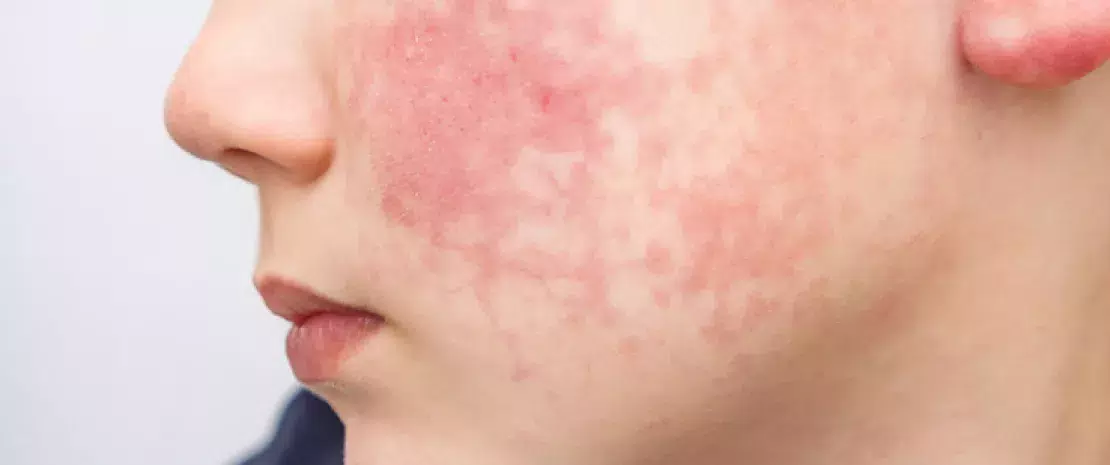Atopic dermatitis: nasal and skin microbiomes associated with disease severity
The skin microbiome may not be the only one involved in the severity of atopic dermatitis: the nasal microbiome may also play a role. Although distinct, these two microbiomes are nonetheless linked.
Sources
This article is based on scientific information

About this article
Changes in the skin microbiome have been associated with atopic dermatitis (AD) and its severity. The nasal microbiota may also be involved: Staphylococcus aureus has been found five times more often in the nose of AD patients. The nostrils may be an important source of self-contamination and of bacterial propagation from the nose to the skin, or vice versa. A study has therefore focused on the relationship between skin and nasal microbiomes in children with AD, based on the severity of the disease.
Nose and skin: two connected microbiomes?
Using 16S-rRNA sequencing, the researchers first found distinct microbial communities in the nose (89 samples) and on the damaged skin (57 samples) of children with AD: while the nasal microbiome was dominated by Actinobacteria (Corynebacterium spp.), Proteobacteria (mainly Moraxella) and Firmicutes (Staphylococcus, Streptococcus and Dolosigranulum spp.), the skin lesions were dominated by staphylococci, and to a lesser extent by species belonging to the genera Pelomonas, Streptococcus and Janthinobacterium. However, correlations were found between the bacterial species in the nose and those on the skin, although the mechanisms involved are not fully understood (cross-transmission between the two niches?).
Microbiomes linked to disease severity
Most importantly, the compositions of the nasal and skin microbiomes, and particularly that of the skin microbiome, were both found to be linked to the severity of pediatric AD. This was so even after adjusting for confounding factors such as age, antibiotic use, and skin sample site. This link between the microbiomes and AD severity is mainly due to the presence of staphylococci in both niches, and of other species, such as Moraxella in the nose.
Distinguishing between bacterial presence and bacterial load
The study also showed that S. aureus was present in the skin lesions of one out of two patients–more often in (sidenote: Trend nevertheless statistically insignificant ) –but that its load (measured by quantitative PCR) was not associated with the severity of AD. Conversely, although the presence of S. epidermidis in the skin was not correlated with severity in 80% of the samples, its load was significantly higher in cases of severe AD. Even though this association does not demonstrate a causal link, the results suggest that the two microbial niches play a role in exacerbating inflammation caused by the disease. Hence the importance of exploring in future studies not only the role of microbial species in AD and their relationships with the host and other species, but also the interactions between the different microbial communities within the organism.










